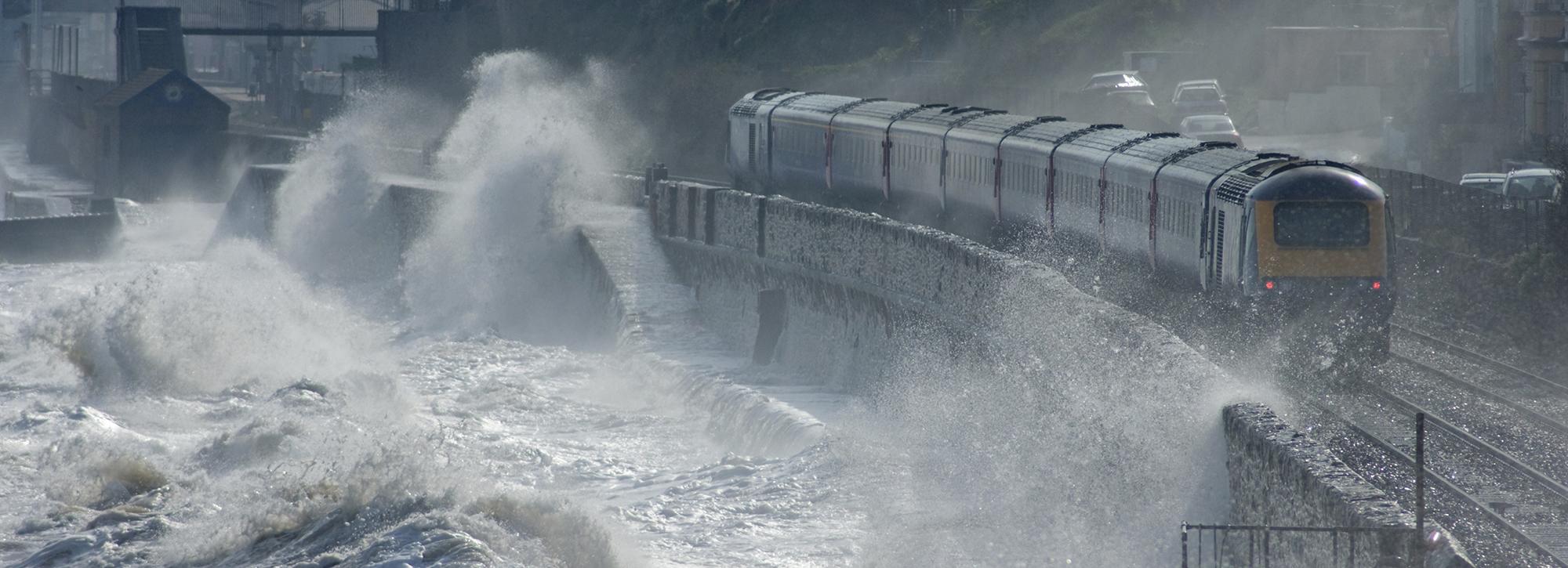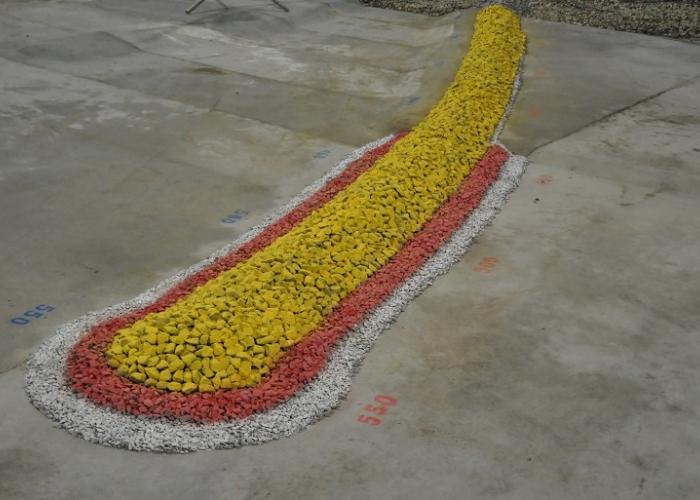
Rigorous lab testing for Dawlish sea wall design
During the severe winter storm of February 2014, a section of the sea wall at Dawlish collapsed, destroying part of the main railway line to Devon and Cornwall. Government funding has been announced to upgrade the sea wall to provide better protection for the railway and residents. Arup, who are designing the new sea wall, have commissioned HR Wallingford to conduct physical modelling tests in the laboratory to verify the performance of the proposed design.
Arup have been contracted to design the seawall along the Marine Parade section between Dawlish Station and Kennaway Tunnel in Devon. Along this section, wave overtopping during storms sprays passing trains, and previously, has also washed away ballast from beneath the track.
The works for Marine Parade will see the height of the sea wall increased by 2.5 metres and include a wave parapet. This will reduce the impact of the waves, reducing the volume of overtopping water and the likelihood of the line being closed during adverse weather. The new seawall will also have more robust foundations to secure the underlying structure.
Eunice Silva, Engineer in HR Wallingford’s Coastal Structures Group, said: “Using the results from Arup’s overtopping study, we are carrying out a whole series of 2D tests over two months in a 40 m long wave flume. This involves constructing the bathymetry, calibrating the different sea states for the different bed levels, building a scaled model of the sea wall design, and then carrying out tests for different crest level and storm conditions.”
James Turley, Associate, Arup, said: “Undertaking these laboratory tests is a cost-effective way to allow us to test many different combinations of the design elements under a variety of predicted wave conditions. We can then use the results to optimise the design to suit the conditions it will be exposed to on this particular stretch of coastline at Dawlish, providing better protection for the railway line and residents.”
David Lovell, Senior Programme Manager for Network Rail’s South West Rail Resilience Programme, said: “The railway is a vital artery for the South West, so it is crucial that we improve resilience not just for today but for the next century. With sea levels predicted to rise, we have been carrying out detailed analysis and HR Wallingford’s facilities are enabling us to replicate, under controlled conditions, the effectiveness of the new wall when subjected to extreme weather and sea conditions. This is a vital part of the design process in order to provide the railway in Dawlish with the best possible protection against the power of nature.
HR Wallingford’s laboratory testing is due to be concluded by the end of April, with work on the new sea wall expected to start in spring 2019 and to be completed by 2021.
Want to know more?

